Etiquetas para ropa – cómo descifrar el significado de sus símbolos
Etiquetas para ropa – cómo descifrar el significado de sus símbolos
La ropa es una parte esencial de nuestra vida diaria. Sin embargo, a menudo nos encontramos con etiquetas confusas que contienen una serie de símbolos. Estos símbolos son cruciales para el cuidado adecuado de nuestras prendas, pero ¿sabemos realmente qué significan? En este artículo, exploraremos cómo descifrar el significado detrás de los símbolos de las etiquetas de la ropa.
La mayoría de las etiquetas de ropa incluyen una combinación de símbolos y letras que representan instrucciones específicas de cuidado. Estos símbolos se derivan de estándares internacionales y se utilizan en todo el mundo.
Uno de los símbolos más comunes que encontramos en las etiquetas de la ropa es el de lavado. Este símbolo suele representarse como un tazón lleno de agua. La letra que acompaña el símbolo indica la temperatura del agua que se debe utilizar para lavar la prenda. Por ejemplo, una letra “A” indica que la prenda debe lavarse en agua fría, mientras que una letra “B” significa que se puede lavar en agua caliente.
Otro símbolo importante que encontramos en las etiquetas es el de secado. Este símbolo se muestra como un cuadrado con un círculo dentro. Si el símbolo está vacío, significa que la prenda se puede secar en una secadora. Si el símbolo tiene un punto dentro del círculo, indica que la prenda solo se puede secar a baja temperatura. Por otro lado, si el símbolo tiene una línea horizontal dentro del círculo, significa que la prenda debe secarse al aire libre.
Además de los símbolos de lavado y secado, encontramos otros símbolos importantes en las etiquetas. Por ejemplo, el símbolo de planchado se representa como una plancha y puede tener uno, dos o tres puntos dentro. Un punto indica que la prenda se puede planchar a baja temperatura, dos puntos indican temperatura media y tres puntos indican alta temperatura.
También nos encontramos con símbolos que nos indican si la prenda se puede blanquear o no. Un triángulo lleno con rayas transversales indica que la prenda no se puede blanquear, mientras que un triángulo vacío significa que la prenda se puede blanquear con cualquier método.
Es importante tener en cuenta que estas son solo algunas de las etiquetas y símbolos más comunes que encontramos en la ropa. Las instrucciones de cuidado pueden variar según el tipo de tejido y la marca. Por ello, es esencial leer cuidadosamente las etiquetas antes de lavar o planchar cualquier prenda.
En conclusión, las etiquetas de ropa contienen una serie de símbolos que nos proporcionan información crucial sobre cómo cuidar adecuadamente nuestras prendas. Conocer el significado de estos símbolos es fundamental para evitar daños a nuestras prendas favoritas. Por lo tanto, la próxima vez que te encuentres con una etiqueta de ropa llena de símbolos, no dudes en consultar este artículo para descifrar su significado y mantener tus prendas en las mejores condiciones posibles. Lavado: un tazón lleno de agua con una letra que indica la temperatura del agua (por ejemplo, A para agua fría, B para agua caliente).
Secado: un cuadrado con un círculo dentro. Si está vacío, se puede secar en una secadora. Si tiene un punto dentro, se debe secar a baja temperatura. Si tiene una línea horizontal dentro, se debe secar al aire libre.
Planchado: una plancha con uno, dos o tres puntos dentro. Un punto indica baja temperatura, dos puntos indican temperatura media y tres puntos indican alta temperatura.
Blanqueamiento: un triángulo lleno con rayas transversales indica que no se puede blanquear, mientras que un triángulo vacío significa que se puede blanquear con cualquier método. Es importante tener en cuenta que estas son solo algunas de las etiquetas y símbolos más comunes que encontramos en la ropa. Las instrucciones de cuidado pueden variar según el tipo de tejido y la marca. Por ello, es esencial leer cuidadosamente las etiquetas antes de lavar o planchar cualquier prenda.
En conclusión, las etiquetas de ropa contienen una serie de símbolos que nos proporcionan información crucial sobre cómo cuidar adecuadamente nuestras prendas. Conocer el significado de estos símbolos es fundamental para evitar daños a nuestras prendas favoritas. Por lo tanto, la próxima vez que te encuentres con una etiqueta de ropa llena de símbolos, no dudes en consultar este artículo para descifrar su significado y mantener tus prendas en las mejores condiciones posibles. Algunos otros símbolos que puedes encontrar en las etiquetas de ropa incluyen:
– Limpieza en seco: un círculo indica que la prenda se debe llevar a la tintorería, mientras que un círculo con una letra dentro indica el tipo de solvente que se debe utilizar.
– Lavado a mano: un símbolo de una mano indica que la prenda debe lavarse a mano en lugar de en la lavadora.
– No retorcer: un símbolo de un cuadrado con una X dentro indica que la prenda no debe ser retorcida al lavarla o escurrirla.
– Lavar por separado: un símbolo de dos círculos indica que la prenda debe lavarse por separado de otras prendas para evitar la decoloración o el daño.
Recuerda que es importante leer todas las etiquetas y símbolos de cuidado antes de lavar, secar, planchar o blanquear cualquier prenda, ya que las instrucciones pueden variar. Seguir estas instrucciones adecuadamente ayudará a prolongar la vida útil de tus prendas y mantenerlas en buen estado. Además, es importante mencionar que algunas etiquetas de ropa también pueden incluir instrucciones adicionales, como el uso de detergentes suaves, evitar el uso de suavizantes de telas, no planchar sobre estampados, entre otros. Es fundamental seguir todas estas indicaciones para garantizar el cuidado adecuado de nuestras prendas y evitar daños innecesarios.
En resumen, aprender a descifrar el significado de los símbolos en las etiquetas de ropa es esencial para cuidar adecuadamente nuestras prendas. Al conocer el significado de estos símbolos, podemos lavar, secar, planchar y blanquear nuestras prendas de manera segura y prolongar su vida útil. Recuerda siempre leer y seguir las instrucciones de cuidado en las etiquetas antes de realizar cualquier acción y así mantener tus prendas en las mejores condiciones posibles. En conclusión, las etiquetas de la ropa contienen una serie de símbolos que nos proporcionan información crucial sobre cómo cuidar adecuadamente nuestras prendas. Conocer el significado de estos símbolos es fundamental para evitar daños a nuestras prendas favoritas. Por lo tanto, la próxima vez que te encuentres con una etiqueta de ropa llena de símbolos, no dudes en consultar este artículo para descifrar su significado y mantener tus prendas en las mejores condiciones posibles. Algunos otros símbolos que puedes encontrar en las etiquetas de ropa incluyen:
– Limpieza en seco: un círculo indica que la prenda se debe llevar a la tintorería, mientras que un círculo con una letra dentro indica el tipo de solvente que se debe utilizar.
– Lavado a mano: un símbolo de una mano indica que la prenda debe lavarse a mano en lugar de en la lavadora.
– No retorcer: un símbolo de un cuadrado con una X dentro indica que la prenda no debe ser retorcida al lavarla o escurrirla.
– Lavar por separado: un símbolo de dos círculos indica que la prenda debe lavarse por separado de otras prendas para evitar la decoloración o el daño.
Recuerda que es importante leer todas las etiquetas y símbolos de cuidado antes de lavar, secar, planchar o blanquear cualquier prenda, ya que las instrucciones pueden variar. Seguir estas instrucciones adecuadamente ayudará a prolongar la vida útil de tus prendas y mantenerlas en buen estado. Además, es importante mencionar que algunas etiquetas de ropa también pueden incluir instrucciones adicionales, como el uso de detergentes suaves, evitar el uso de suavizantes de telas, no planchar sobre estampados, entre otros. Es fundamental seguir todas estas indicaciones para garantizar el cuidado adecuado de nuestras prendas y evitar daños innecesarios.
En resumen, aprender a descifrar el significado de los símbolos en las etiquetas de ropa es esencial para cuidar adecuadamente nuestras prendas. Al conocer el significado de estos símbolos, podemos lavar, secar, planchar y blanquear nuestras prendas de manera segura y prolongar su vida útil. Recuerda siempre leer y seguir las instrucciones de cuidado en las etiquetas antes de realizar cualquier acción y así mantener tus prendas en las mejores condiciones posibles.

Do you ever pay attention to clothing labels? Most of us are in such a hurry to get rid of them that we don’t even bother reading them. However, clothing labels are actually an important part of every new garment. They contain valuable information on how to properly wash and iron your clothes to keep them in good condition for longer.
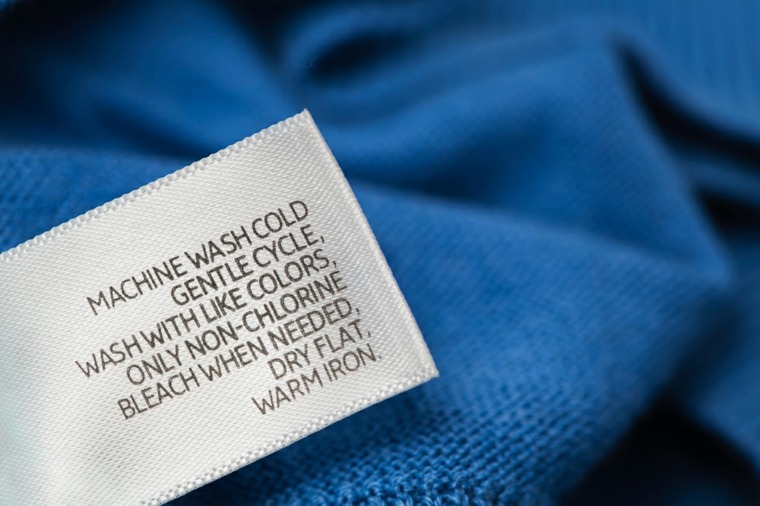
It turns out that if we paid more attention to these clothing labels, we could save ourselves a lot of trouble. By following the instructions on the labels, we can enjoy our favorite clothes for a longer time and avoid having to replace them every season. In other words, improper washing and ironing, as well as using the wrong detergents, are the main causes of fabric wear and tear.
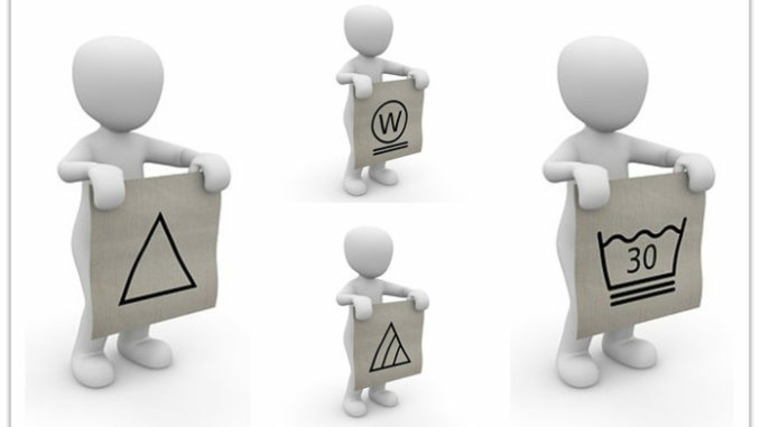
Why Reading Clothing Labels is Important
That’s why we have prepared a comprehensive guide for our readers on the meaning of each symbol found on clothing labels. However, if clothing labels bother you or irritate your skin, you are not obligated to keep them. You can cut them off and throw them away. But it’s still a good idea to read them and remember the recommendations they contain. The reward for properly caring for your clothes will be their impeccable appearance and the money saved from not having to buy new clothes so often.
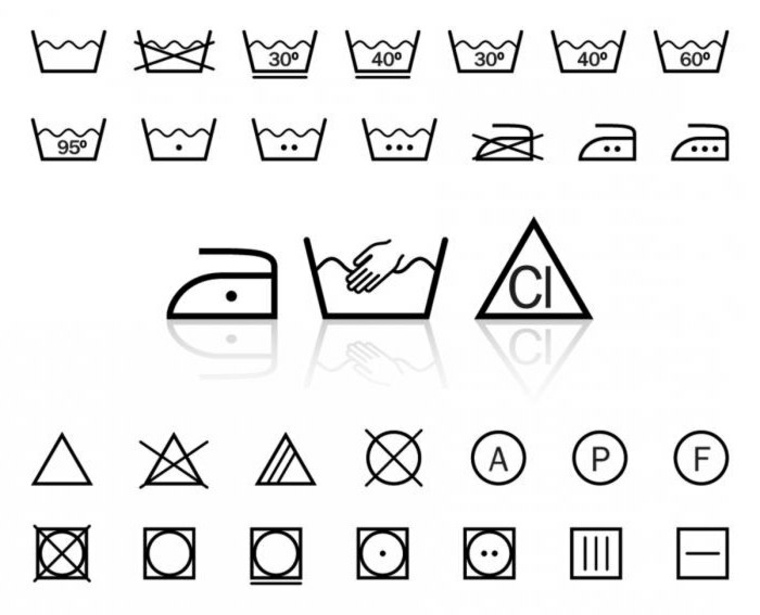
Key Steps:
It’s easy to read the care and washing symbols on your clothing labels and still not know how to properly wash them! However, by familiarizing yourself with the explanations of each symbol, you can avoid making serious mistakes.

We’ve all experienced it at least once: taking out a favorite garment from the washing machine only to discover that it has shrunk, deformed, faded, or been damaged. That’s when you wish you had paid more attention to the washing symbols on the clothing labels.
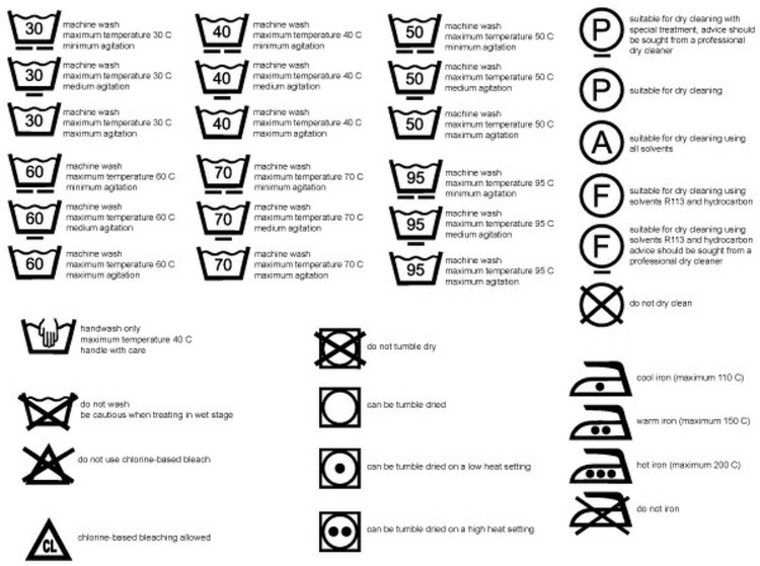
Next, we will explain the most common washing instruction symbols found on clothing labels. You can also find useful images that you can print out with many of the most common washing symbols.
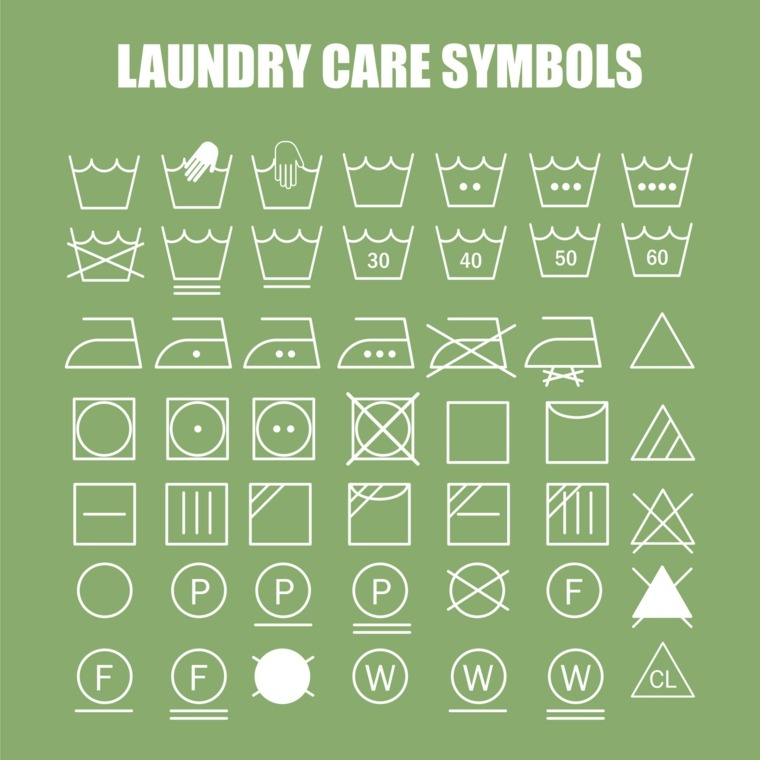
Washing Symbols: Basic Washing Instructions on Clothing Labels
The washing symbol on clothing labels is represented by a bucket filled with water. It indicates the temperature or machine setting you should use to wash the garment.
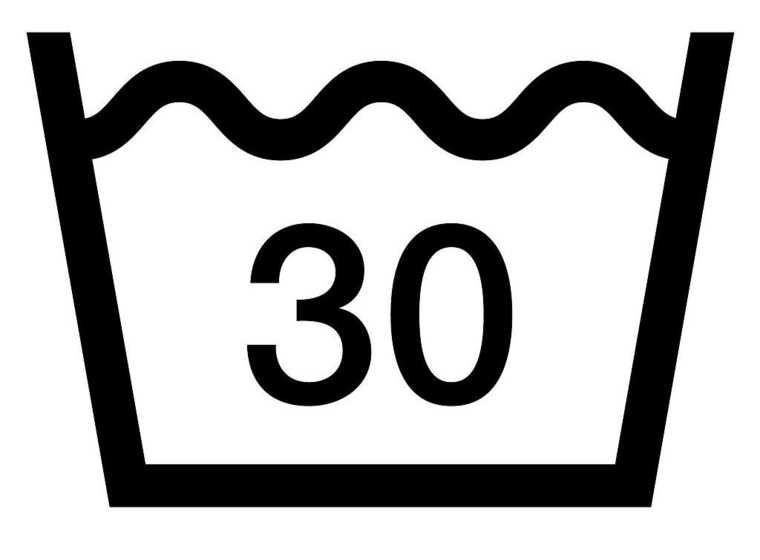
Temperature indication: within the ‘Normal Wash’ symbol, there will be a temperature value or 1 to 6 dots indicating temperature ranges.
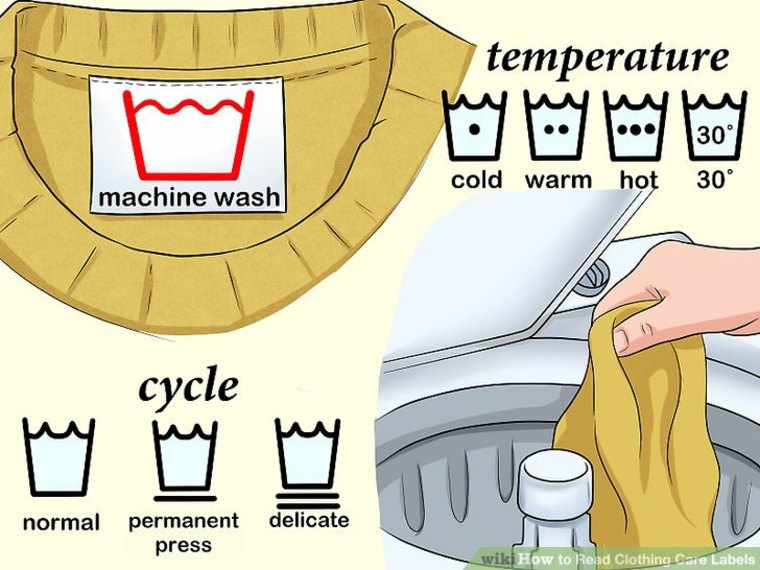
One dot corresponds to 30º C
Two dots correspond to 40º C
Three dots correspond to 50º C
Four dots correspond to 60º C
Five dots correspond to 70º C
Six dots correspond to 95º C
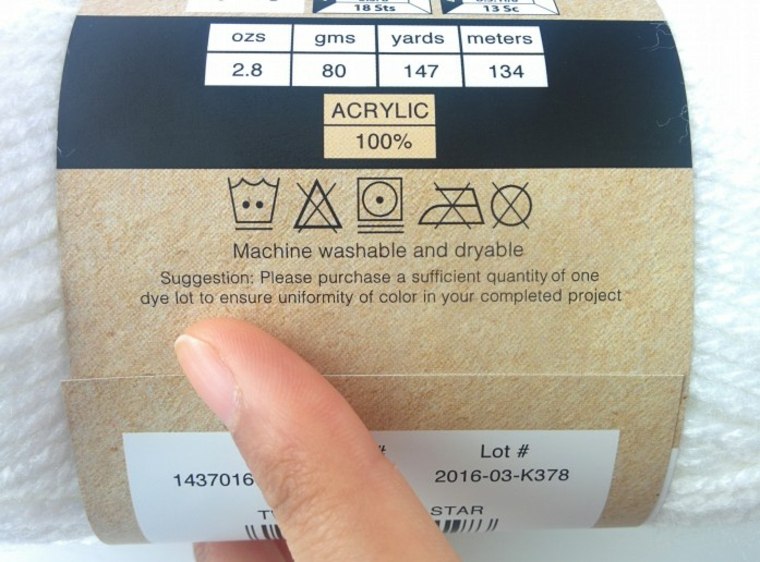
Permanent Press: The permanent press symbol has a line underneath it.The standard washing symbol is a common sight on clothing labels. It indicates that the garment can be washed in a regular cycle without any special considerations. However, there are other symbols that provide more specific instructions for different types of fabrics and garments.
One such symbol is the gentle cycle symbol, which is represented by two lines underneath the standard washing symbol. This symbol is used for delicate fibers like wool or silk, or for garments that could be damaged by vigorous washing, such as sequined blouses, stockings, or lycra materials.
Another important symbol is the hand wash symbol, which is the standard washing symbol with a hand on top. This symbol indicates that the garment should not be washed in a washing machine. Instead, it should be washed by hand in a sink or small tub, using your hands to ensure that the detergent is thoroughly worked into the fabric and then rinsed out. It is important to check the detergent label to ensure that it is suitable for hand washing, as some detergents are specifically designed for this purpose and are gentle on both the fabric and your hands.
On the other hand, there is the “do not wash” symbol, which is the standard washing symbol crossed out with a cross. If the clothing label instructs you not to wash the item, it means that it should be dry cleaned after getting dirty. Refer to the dry cleaning symbols for further instructions.
Moving on to the dry cleaning symbols, there is a triangle symbol that indicates whether specific bleaching products can be used on the garment. A triangle with nothing in the middle means that any type of chlorine bleach can be used when necessary.
A triangle filled with diagonal lines, on the other hand, means that only non-chlorine bleaches should be used. Check the ingredients in your bleach to see if it contains chlorine.
Lastly, a solid black triangle with crossed lines means “do not bleach.” You should not attempt to use any type of chlorine bleach on this garment.
Now, let’s talk about the drying symbols. The basic dryer symbol is a square with a circle in the middle. Just like with the washing symbols, the number of dots inside the circle will indicate the heat setting you should use for drying, as well as any specific program settings required. Three dots mean high heat, two dots mean medium heat, and one dot means low heat.
If an item is marked as “do not tumble dry” with a cross printed over the drying symbol, it means that you should let it air dry on a drying rack, in a well-ventilated closet, or outside on a clothesline instead of putting it in the dryer.
Understanding these symbols will help you take better care of your clothes and ensure that they last longer. So next time you’re doing laundry, take a moment to check the labels and follow the instructions for each garment.Before, a single line below the dryer symbol means that a permanent ironing setting should be used.
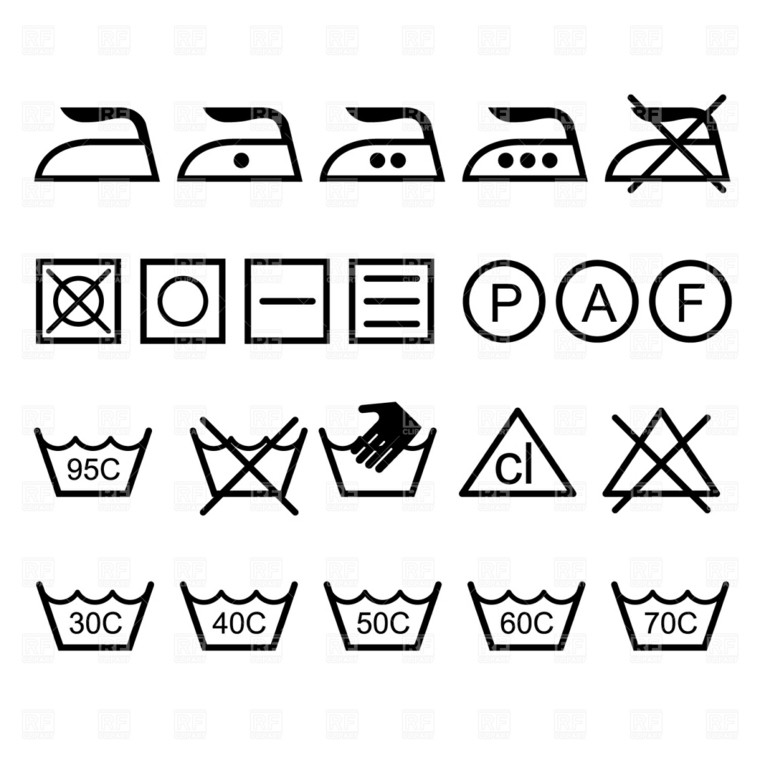
Dryer, delicate setting: double lines indicate that the Delicate setting should be used.

Ironing instructions on clothing labels
To make life easier, the ironing symbol is shaped like an old iron. The symbols also use the same dot system for heat levels, which should be adjusted on your iron.
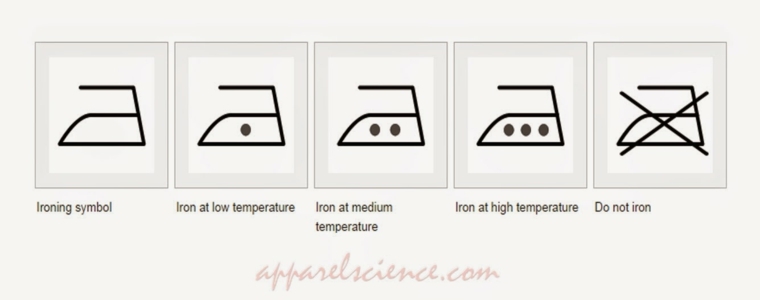
Three dots mean the item can be ironed at high temperatures.
Two dots mean it can be ironed at medium temperature.
One dot means it can be ironed at low temperature.
Dry cleaning symbols on clothing labels
Dry clean: the dry cleaning symbol is a circle.
Do not dry clean: a crossed-out circle means the item should not be dry cleaned.
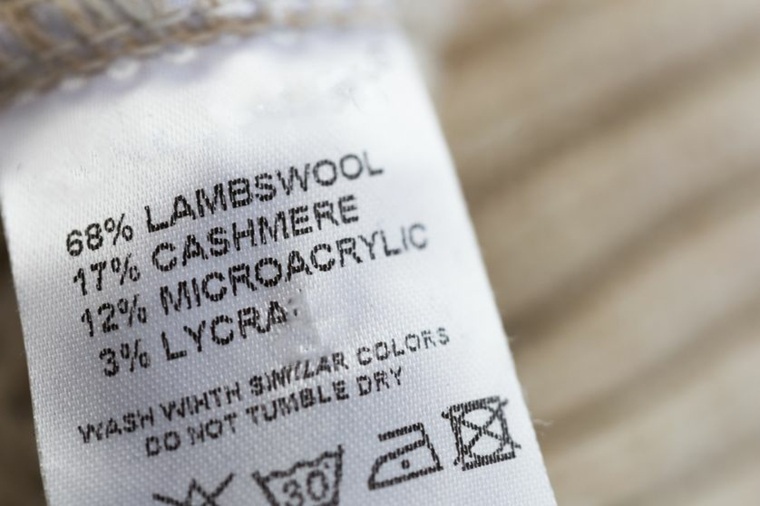
Dry clean only: for garments that only need to be dry cleaned, the circle has a letter ‘P’ inside.
Normal dry clean: clothing that needs to be dry cleaned under normal conditions will have a letter ‘F’ inside the circle.
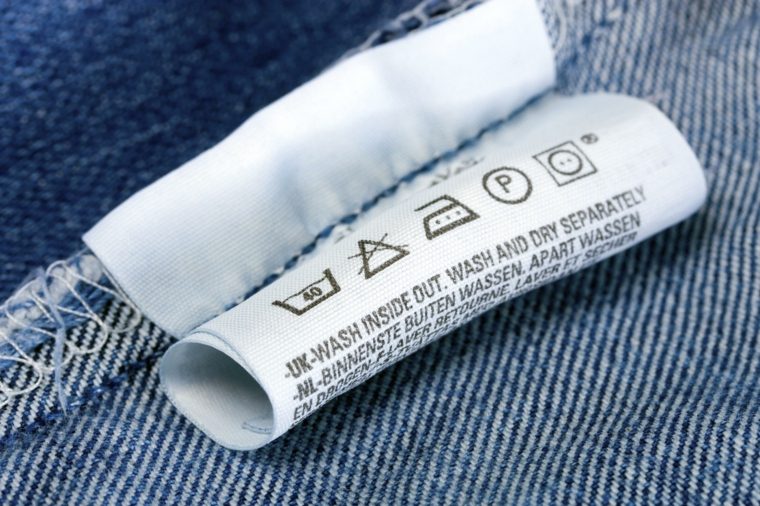
And there you have it! Your favorite winter clothes will never shrink in the washer again now that you understand these laundry symbols on clothing labels!
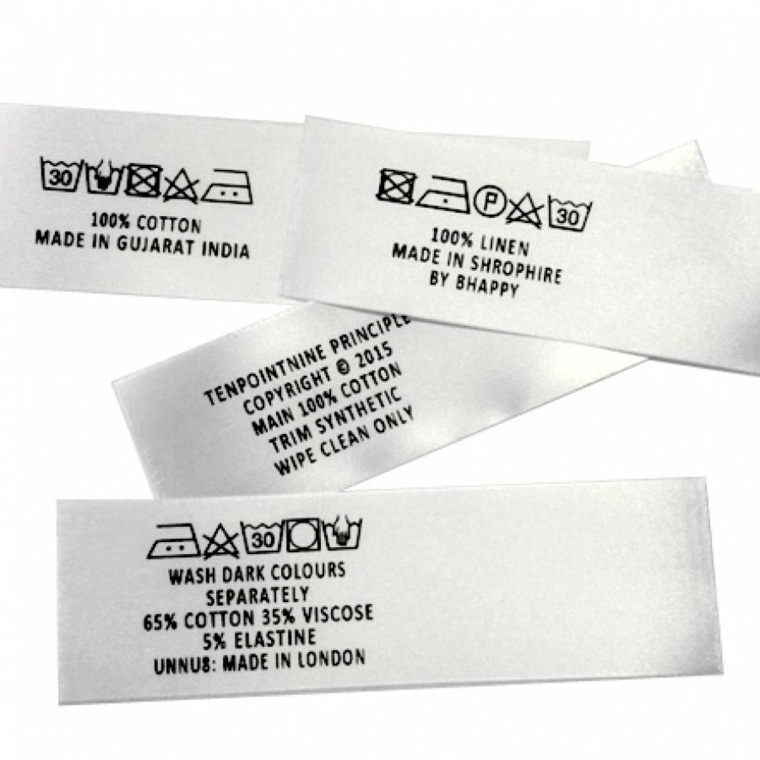
Other tips on how to wash, iron, and dry different types of clothing
Buying quality clothing is one thing, but there are many things you can do to make your favorite garments last. Designers and trusted dry cleaners give us the following tips on how to care for our clothes.
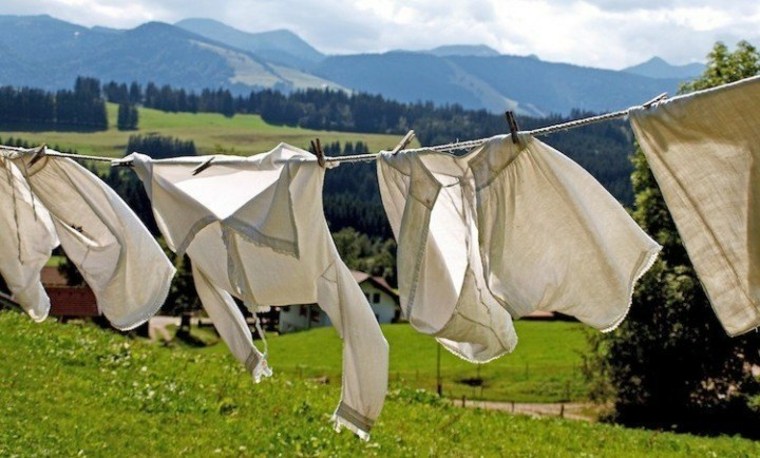
And most importantly, you should enjoy everything you wear, with accessories that bring joy to life and without fear of ruining them. These are the experts’ tips for wearing, storing, and even cleaning your clothes properly to extend the life of your favorite items.
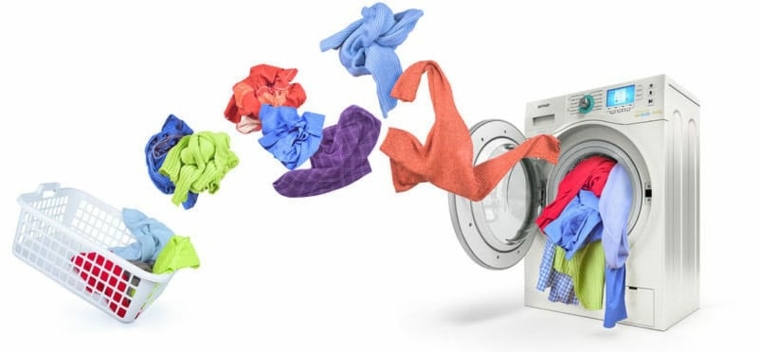
Underwear and swimwear
How to wash delicate garments at home:
Wash similar colors together.
Fill a container with cold water and mild detergent.
Agitate the clothes several times over the course of an hour.
Gently squeeze out excess water.
Dry on a drying rack.
Always rinse swimwear after use.

Swimwear should always be soaked in water after each use. Saltwater or chlorine breaks down the fibers and elastic. Your swimsuits will last much longer if you follow this rule.
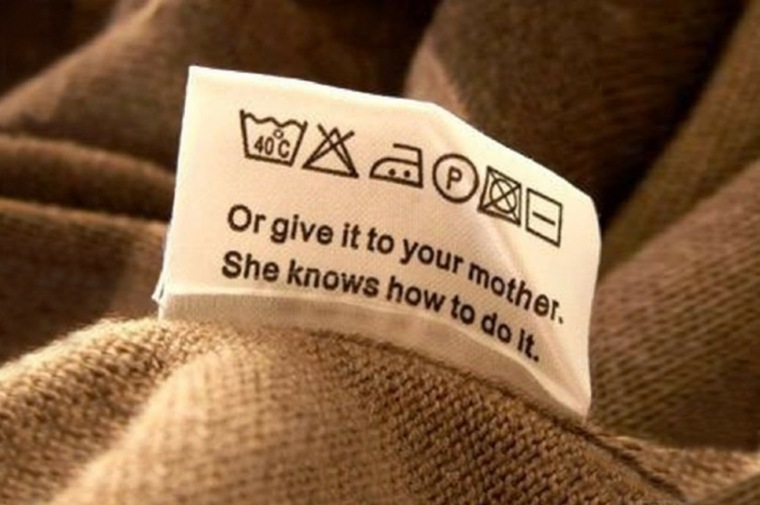
Anything with elastic should be rotated, especially bras. Elastic needs rest. In general, no matter what you do, elastic has a lifespan, but the better you take care of them, the longer they will last.
rnrn
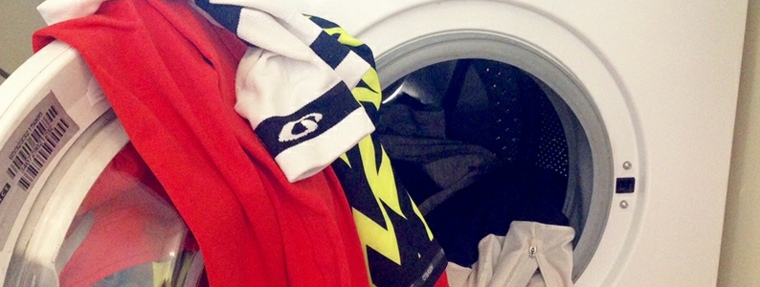
Keeping your clothes in good condition is essential for their longevity. Experts recommend giving your underwear some space to breathe by not overcrowding them. You can also place empty perfume bottles in your lingerie drawers to leave a pleasant scent.

Tops, T-shirts, and Shirts
A general rule of thumb is that the width of the hanger should not exceed the width of the shirt’s shoulders.
Tips for caring for your button-up shirts:
Pay close attention to the inside of the collars. This is where stains can arise from skincare products like lotion or makeup. Make sure to wash them immediately, especially before hanging the shirts in the closet.
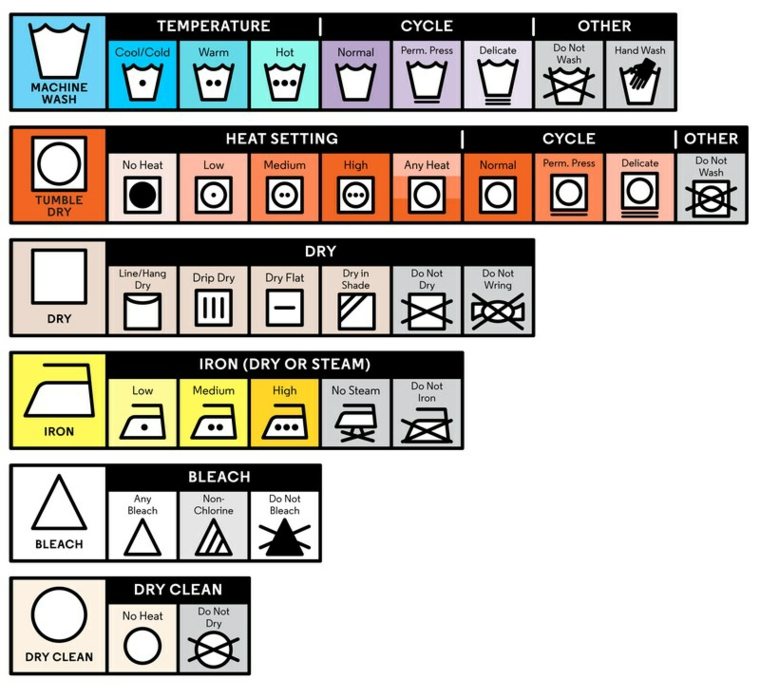
Avoid using dryers as they can damage the fabric fibers and cause premature shrinking and aging of the garment.

How to Dry Clothes
When hanging a shirt to dry, make sure the width of the hanger does not exceed the width of the shirt’s shoulders. Ensure that the shoulders are properly placed on the hanger and, in general, pull the fabric of the shirt slightly to limit wrinkles (this will make ironing easier). When storing hangers in the closet, it is recommended to leave space between them to prevent them from wrinkling each other.
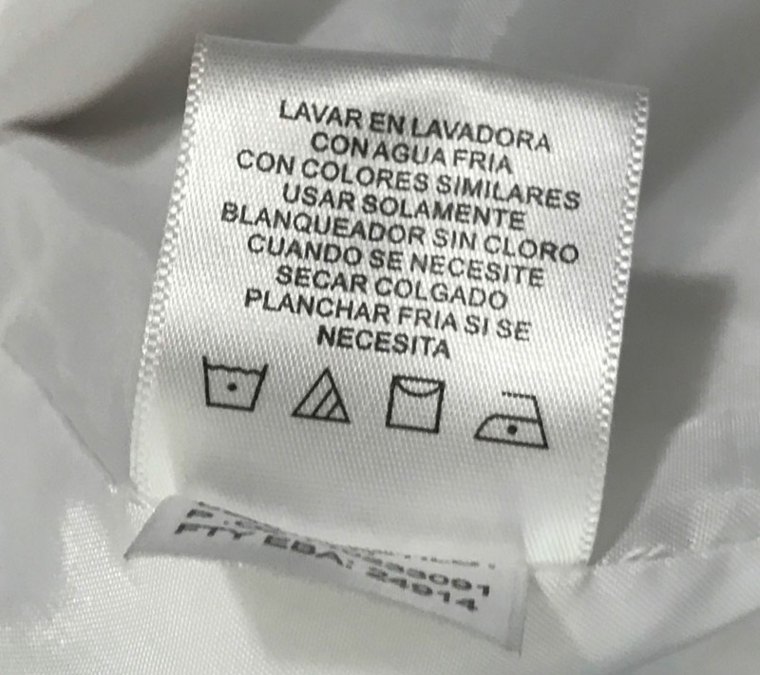
Before ironing any garment, it is important to check for any remaining stains. If there are any, it is necessary to wash the garment again.
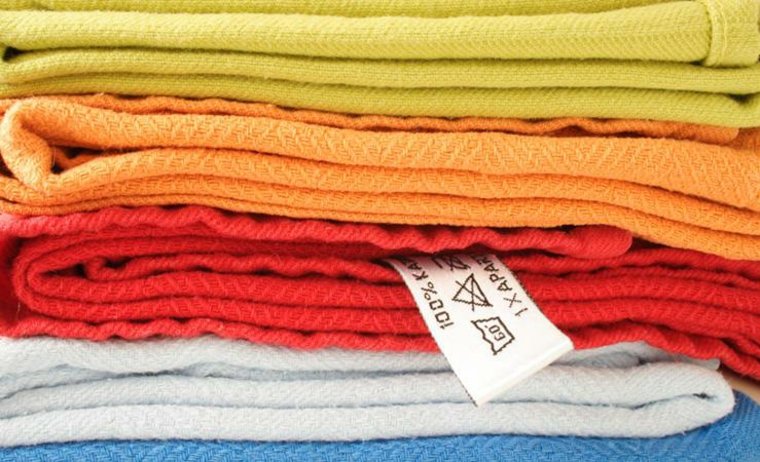
Avoid completely dry ironing. It is better to iron the shirt when it is still slightly damp. If necessary, a spray bottle with water or the steam from the iron can facilitate ironing.
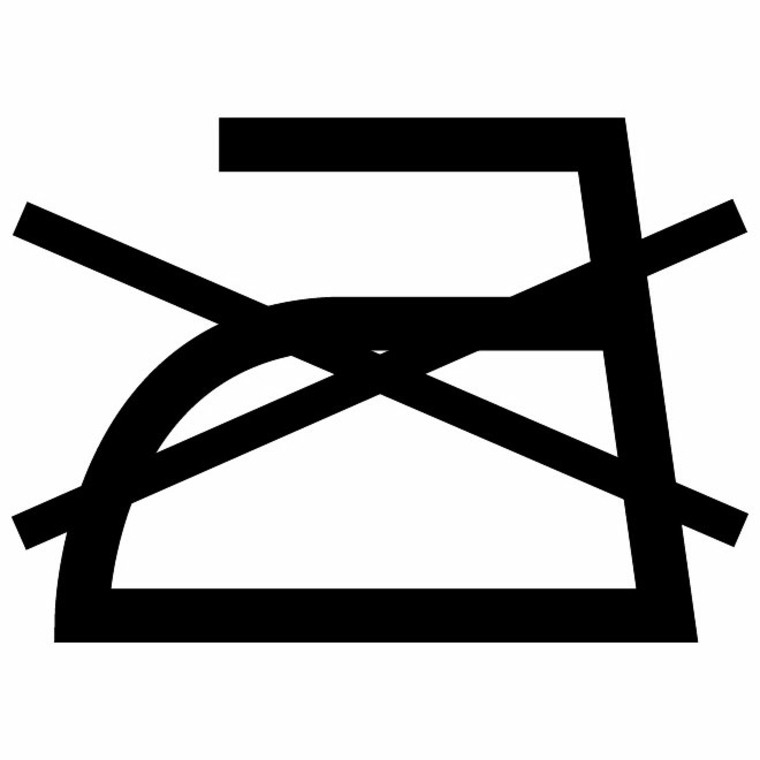
The Order of Ironing Clothes
The correct order of ironing is: collar, cuffs, and then the rest of the shirt.
How to Pack Clothes for Traveling
Button up the shirt completely.
Place a plastic or cardboard strip, like the ones that come inside new shirts or cleaning products, inside the collar (to help hold the collar and maintain its shape).

With the shirt facing down, place a sheet of paper or tissue paper on the back of the shirt before folding it (to prevent wrinkles).
Use soft garment bags to keep shirts in good condition.
Tip for wrinkle-free travel: Bring a small spray bottle to fill with water. When unpacking, spray the shirts and give them a gentle tug at the bottom hem to naturally remove wrinkles without the need for ironing.
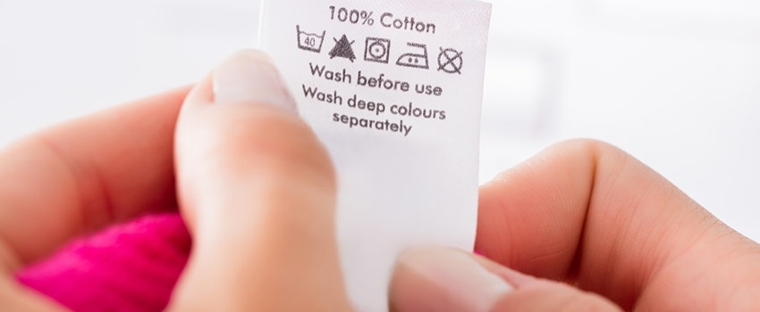
How to Care for T-Shirts
Designer Tony Melillo, whose popular line of super-soft t-shirts (ATM) is loved by web editors, wears a white t-shirt almost daily. Here are his simple tips for caring for them.
Handle them gently. Melillo suggests washing t-shirts with cold water and drying them on a permanent press setting to avoid wrinkles.
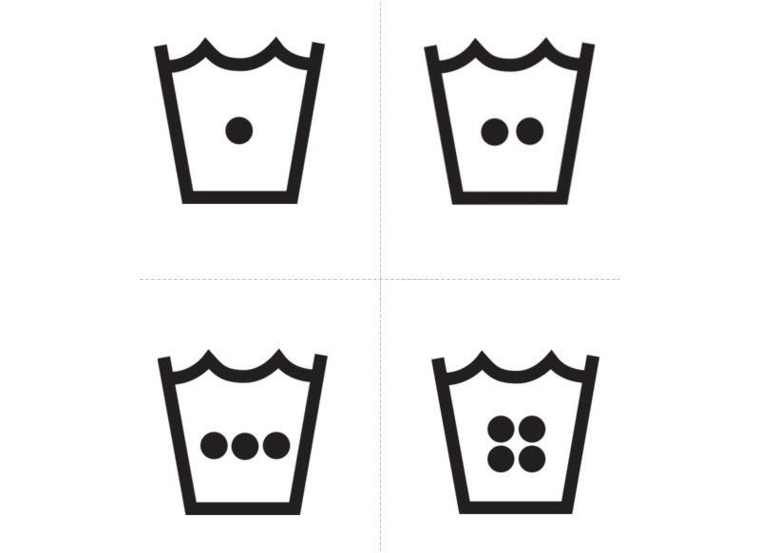
Fold the t-shirts carefully. Melillo suggests folding the sleeves back and then folding the shirt in half to avoid creating additional creases.Organize them in a low stack on the shelf. Don’t hang your shirts: it says it creates unsightly hanger marks and stretches them out: shirts can grow an inch due to the effect of gravity on cotton.
We hope that our article on the meaning of symbols on clothing labels is useful in the daily care of your wardrobe. Follow our tips on washing, ironing, and drying your clothes to keep them impeccable and enjoy them to the fullest.
[Image: lavar-correctamente-la-ropa]
[Image: lavado-simbolos-ejemplo]
[Image: que-significan-los-simbolos-de-lavado]
[Image: simbolos-de-lavado]
[Image: simbolos-en-las-etiquetas-para-ropa]
[Image: simbolos-temperaturas-de-lavado]






